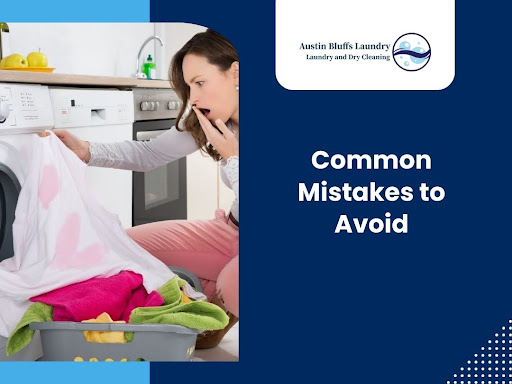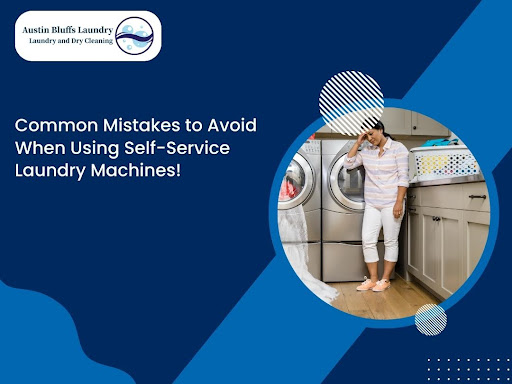Laundry day is a universal experience. Whether you’re a student in a bustling city or a busy professional managing multiple tasks, the convenience of self-service laundry machines at laundry mats or in your apartment complex can be a lifesaver. However, navigating these machines isn’t always straightforward. From sorting clothes to choosing the right detergent and managing cycles, several pitfalls can turn a simple chore into a frustrating ordeal.
In this blog post, we’ll delve into some of the most common mistakes people make when using self-service laundry machines. Whether you’re a seasoned laundry veteran or a newcomer to the world of laundromats, understanding these pitfalls will help you streamline your laundry routine, save time, and achieve cleaner clothes.
Why Self-Service Laundry?
Self-service laundry facilities, also known as laundromats or laundry mats, offer an alternative to traditional home washing machines. They are especially useful for individuals living in apartments without in-unit laundry facilities or for those who prefer the convenience of getting all their laundry done in one go.
One of the biggest advantages of using self-service laundry is flexibility. You can wash and dry multiple loads simultaneously, saving you hours compared to doing laundry at home. Additionally, many laundromats now offer amenities like free Wi-Fi, comfortable seating areas, and vending machines, making the chore of doing laundry a bit more bearable.
Common Mistakes to Avoid

1. Overloading the Machine
Overloading the washing machine is one of the most frequent blunders individuals make. While it may be tempting to shove all your clothes into a single load to save money and time, overloading can lead to inefficient cleaning. Clothes need room to move around in the wash cycle for detergent to effectively clean them. Overloading not only results in poorly cleaned clothes but can also put strain on the machine, potentially causing it to malfunction.
- Tip: Follow the guidelines posted on the machine for load capacity. Typically, it’s better to split your laundry into smaller loads rather than trying to cram everything into one.
2. Ignoring Sorting Guidelines
Sorting your laundry isn’t just about keeping whites separate from colors. It’s also about understanding fabric types and washing requirements. Mixing delicate items with heavy towels or jeans can lead to damage to your more fragile clothing. Colors can bleed, and fabrics can shrink or stretch if not washed properly.
- Tip: Sort your laundry into separate piles based on color (whites, lights, darks) and fabric type (delicates, towels). This simple step can prevent mishaps and keep your clothes looking new for longer.
3. Using the Wrong Detergent
Not all detergents are created equal. Using the wrong detergent can result in residue buildup on your clothes, causing them to feel stiff or dull over time. Additionally, some machines may require high-efficiency (HE) detergents, especially newer models.
- Tip: Choose a detergent that is suitable for the types of clothes you are washing and follow the recommended amount based on the load size. If unsure, opt for a gentle detergent that is suitable for all fabrics.
4. Skipping Stain Treatment
Treating stains before putting clothes in the wash can make a significant difference in the outcome. Whether it’s a dab of detergent directly on the stain or a pre-treatment product, taking a few seconds to address stains can prevent them from setting in permanently.
- Tip: Keep a stain removal pen or spray in your laundry bag so you can treat stains as soon as they happen. A more effective stain removal throughout the wash cycle is ensured by this proactive technique.
5. Not Checking Pockets
Leaving items in your pockets before washing can lead to unexpected surprises like shredded tissues, melted candy, or even worse, damage to the machine. Coins and other small items can also cause malfunctions if they find their way into the machine’s mechanisms.
- Tip: Always check your pockets before loading clothes into the washer. It only takes a moment and can save you from a headache later on.
6. Incorrectly Loading the Machine

Believe it or not, there is a right way to load a washing machine. Placing clothes evenly around the agitator or drum ensures balanced spinning and better cleaning. Improper loading can cause the machine to shake excessively or even stop mid-cycle.
- Tip: Start with the larger things, such as sheets and towels, and distribute them evenly around the drum or agitator. Add smaller items like socks and undergarments to ensure everything gets washed thoroughly.
7. Using Too Much (or Too Little) Detergent
Finding the right amount of detergent can be tricky, especially if you’re accustomed to a different machine or detergent brand. Using too much detergent can leave residue on clothes and contribute to washer buildup, while too little may not clean effectively.
- Tip: Follow the detergent manufacturer’s guidelines for your load size. Adjust the amount based on the soil level of your clothes—more for heavily soiled items and less for lightly soiled ones.
8. Neglecting to Clean the Machine
Self-service laundry machines see a lot of use, which means they can accumulate dirt, lint, and detergent residue over time. Neglecting to clean the machine’s detergent dispensers, door seals, and drum can lead to unpleasant odors and affect wash quality.
- Tip: Periodically wipe down the inside of the machine, including the door seal and detergent compartments, with a damp cloth. To keep your machine smelling fresh, run an empty cycle with vinegar or a washing machine cleanser to get rid of buildup.
9. Not Checking Machine Settings
Modern self-service laundry machines offer a variety of wash and dry settings to accommodate different fabrics and soil levels. Not selecting the appropriate settings for your load can result in inefficient cleaning or drying, prolonging your time at the laundromat.
- Tip: Take a moment to review the machine’s settings before starting your laundry. Adjust settings such as water temperature, cycle duration, and spin speed based on the garments you’re washing to achieve optimal results.
10. Leaving Clothes in the Dryer Too Long
As soon as your clothes are dry, take them out of the dryer to avoid creases and lessen static electricity. Clothes that are left in the dryer unattended may wrinkle, especially delicate textiles, and may need to be ironed again or re-dried.
- Tip: Set a timer to remind yourself to check on your laundry towards the end of the drying cycle. Fold or hang clothes immediately to keep them looking neat and wrinkle-free.
Conclusion
It’s not hard to get proficient with self-service laundry machines.By avoiding these common mistakes and following our tips, you can streamline your laundry routine and achieve cleaner, fresher clothes every time. Remember, a little preparation and attention to detail go a long way in making laundry day a hassle-free experience.
Next time you visit your local laundromat or self-service laundry facility, put these tips into practice and notice the difference in your laundry results. With the convenience of self-service laundry and a few best practices under your belt, you’ll be able to tackle laundry day with confidence and efficiency.
So, go ahead—embrace the ease and flexibility of self-service laundry while sidestepping these pitfalls.
Happy washing!

